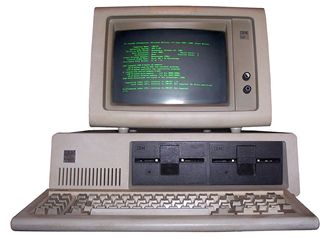 Businesses across Europe are spending more than ever on mobiles for their workforce.
Businesses across Europe are spending more than ever on mobiles for their workforce.
Tag: phones
Devices fail in 2015
 The outlook for PCs looks pretty grim in 2015, according to data released by Gartner.
The outlook for PCs looks pretty grim in 2015, according to data released by Gartner.
The market research outfit said that PCs and ultra mobiles will deliver revenues of $226 billion this year, but that will be a 7.2 percent decline.
You have to take the current strength of the US dollar into account, Gartner warned, but even after that, the global market will show a 3.1 percent drop during the year.
Gartner forecasts that so called traditional PCs – that includes desktops and notebooks – will fall from 252,881,000 units this year, to 236,341,000 units in 2017.
The firm said that PC vendors are raising their prices to stay profitable but this is having a Catch 22 effect because it’s forcing customers to keep their purses tightly closed. Home users are also not expected to lash out on new devices.
Mobile phones will grow by 3.5 percent during this year and Gartner believes that rather than buy PCs, people will buy smartphones instead. Tablet sales will suffer because of that.
Roberta Cozza, a research director at Gartner, said: “Following rapid growth, the current mature consumer installed base for tablets is comparable to that of notebooks. Not only is the tablet segment nearing saturation in mature markets, but the influx of hybrids and fabulist will compete directly with tablets in emerging markets.”
She seems to think that despite Apple’s high prices, many users of high end Android devices will move to iOS.
Huawei dusts off US invasion plans
 Chinese phone maker Huawei is planning a campaign to win over US consumers, rolling out new mobile phones and wearable devices backed by a marketing effort.
Chinese phone maker Huawei is planning a campaign to win over US consumers, rolling out new mobile phones and wearable devices backed by a marketing effort.
It is a brave move considering that it was only two years ago that the company was branded a spy by US senators who knew at the time that there stance was a case of the kettle calling the pot black.
China’s second-largest smartphone maker, already with more than $40 billion in annual revenue from a wide range of telecom gear and products, is preparing to introduce Americans to several of its smartphones and wearable devices this year, including its youth-oriented “Honor” phone.
Huawei’s US spokesman Bill Plummer said the company’s 2015 US plans will include traditional advertising, online promotion and sports team sponsorships.
He said the company wanted to change its marketing approach to shed its image as a purveyor of cheap technology products.
In December, it touted its new Honor 6 Plus phone on a billboard in New York’s Times Square. Plummer said that was “a sign of things to come”.
He declined to say how much Huawei will spend on its new marketing campaign or what sports team, or teams, it had in mind. In the UK it already sponsors Arsenal, cricket teams in India and rugby clubs in Australia.
At the Mobile World Congress over the weekend in Barcelona, Huawei took the wraps off a smartwatch that will be sold in over 20 countries including the US.
Huawei now intends to appeal directly to consumers with several new phone models, both low end and high end. It hopes to secure deals with carriers, selling online through marketplaces, such as the one operated by Amazon.com, and on its own fledgling gethuawei.com US direct-sales website.
US senators are mostly concerned with Huawei’s networking equipment, but in consumer land, Huawei has a huge problem with brand recognition.
MS Office appears on Android phones
 Microsoft has announced Office Mobile will now be available to Microsoft 365 subscribers on Android.
Microsoft has announced Office Mobile will now be available to Microsoft 365 subscribers on Android.
Earlier this year, Microsoft announced Office Mobile for iPhone, meaning Office software is now available on Android, iOS, and Windows Phone, as well as on desktops and laptops.
Existing 365 customers will get access to Office Mobile for Android at no extra cost. It opens up Word, Excel and PowerPoint document reading and editing to the platform.
For now, it’s only available in the United States but more regions are promised in the coming weeks, in 33 languages and 117 markets.
Office Mobile for Android can be found on the Google Play Store, but users will need a qualifying Office 365 subscription, including Office 365 Home Premium and Office 365 ProPlus.
The idea is to sync up mobile work with work at the office or at home. Editing documents in Office Mobile for Android will save changes made in the cloud, and these changes will be accessible from whichever other device or platform customers use. A single subscription is available for up to five mobile devices, excluding Windows Phone which has the app pre-installed.
This app is designed for the phone in mind. We have asked a Microsoft spokesperson if tablet optimised versions will be made available, but for now Microsoft is recommending tablet users go to Office Web Apps.
“We built Office Mobile for Android phones to ensure a great Office experience when using a small screen device,” an FAQ reads. “Therefore you will not be able to download and install Office Mobile for Android phones on an Android tablet from the Google Play Store”.
It’s likely the varied screen sizes have something to do with this.
Anyone interested in trying the app out can sign up for a 30 day Office 365 trial at http://www.office.com.
Chinese smartphones to shake things up
 Sales of high-end smartphones are still very strong, but the market seems to be slowly shifting to cheaper gear.
Sales of high-end smartphones are still very strong, but the market seems to be slowly shifting to cheaper gear.
As smartphone penetration rates in developed markets are already relatively high, much of the new growth is coming from emerging markets which don’t have the capacity to gobble up millions of pricey iPhones and flagship Galaxies.
According to IDC, the average price of smartphones has dropped from $450 to $375 since early 2012. As growth is now being generated in China and India, cheaper smartphones are starting to take off. Lenovo stands to gain from the trend, as it already has a very powerful grip on the Chinese market. Chinese players like Huawei and ZTE should also do well. The big losers might be Apple and Samsung, but nobody expects them to sulk and sob in the corner while their lead evaporates.
Apple is apparently working on a cheaper, plastic iPhone, designed specifically to target emerging markets. Samsung and HTC already have mini versions of their flagship phones and although the Galaxy S3 Mini was a disappointment, HTC seems to have cracked it with the HTC One Mini. Motorola’s new X-phone, or Moto X, is set to launch in a week or so and it won’t be a high-end device as many had expected.
However, Chinese smartphone makers still might get the best of big brands. We are seeing similar trends in the low-end tablet market. Chinese manufacturers can respond to changes much faster, they are more dynamic and their costs are much lower. Samsung and Apple might spend hundreds of millions on marketing, but no-name smartphone makers can’t rely on an overpaid hype machine – their only choice is to come up with low-BOM (bill of materials), yet competitive low-margin products, which means China is actually teaching the West a lesson in capitalism.
ABI analyst Michael Morgan told Bloomberg that the days of fast growth in the high-end smartphone market are over.
“It’s the Chinese companies who know how to survive on tiny margins that are ready for the fight that’s about to ensue,” he said.
In other words we may be in for a repeat of the PC price slump of the mid nineties. Chinese manufacturers can churn out cheap smartphones and tablets, much like PCs, but this time around the shift might even be faster. Even if Chinese companies can’t access the latest and greatest in mobile tech, that doesn’t really matter in the mid-range and low-end. Last year’s tech is good enough and it’s cheap, which is exactly what they need.
Furthermore, most chipmakers should have no qualms about selling their latest processors to anyone willing to pay – since most of them don’t have their own smartphone business, although Samsung is an exception. The same goes for most other components and some chipmakers have a vested interest in peddling their own designs. Nvidia seems to be leading the way, as it is already working on reference smartphone and tablet designs. Its next SoC (Tegra 4i) is a mid-range chip with LTE and the first products based on the new chip, and possibly Nvidia’s reference design, should appear in early 2014.
This is also pretty bad news for Nokia, which had hoped to replace its Symbian and S40-based offerings with cheap Windows phones. However, Nokia feature phone users in emerging markets seem to be choosing cheap Chinese Androids instead.
However, most high-end smartphone sales in Europe are still coming from carriers, thanks to comprehensive (and usually quite pricey) two-year plans. If European and US carriers embrace more mid-range Chinese phones, things could change in a heartbeat.





